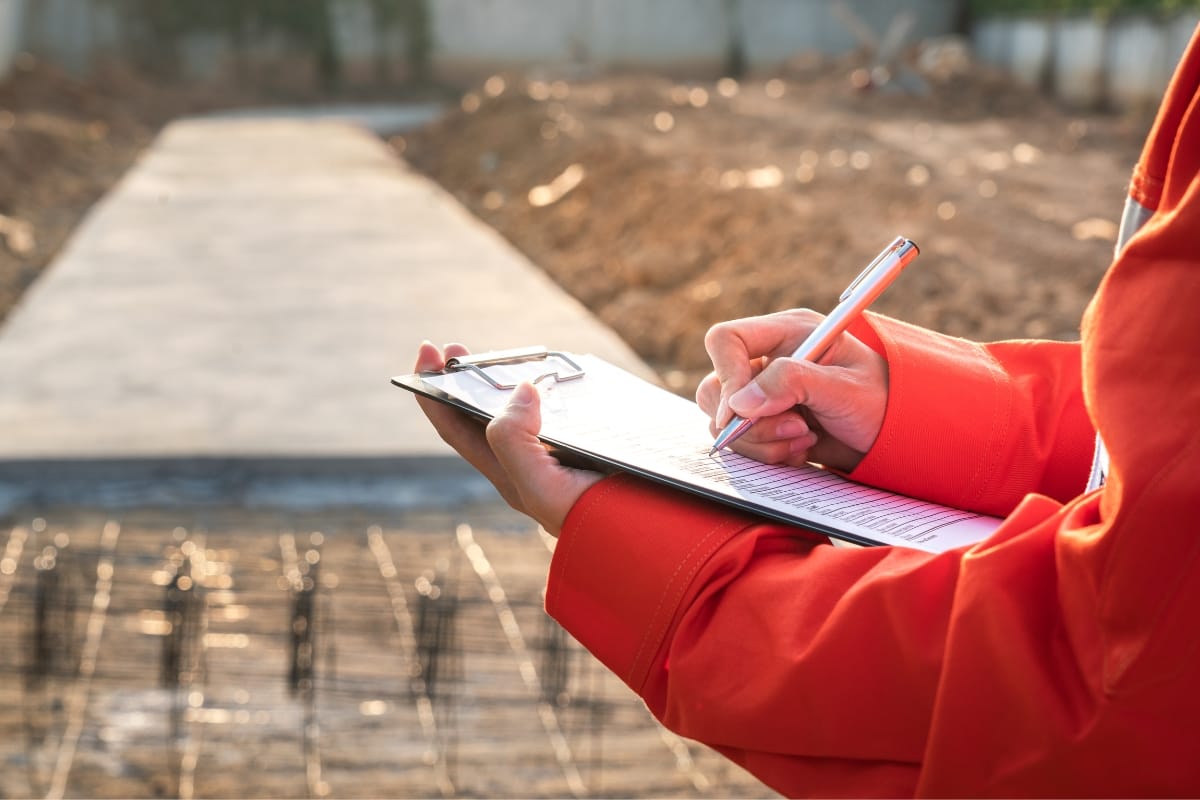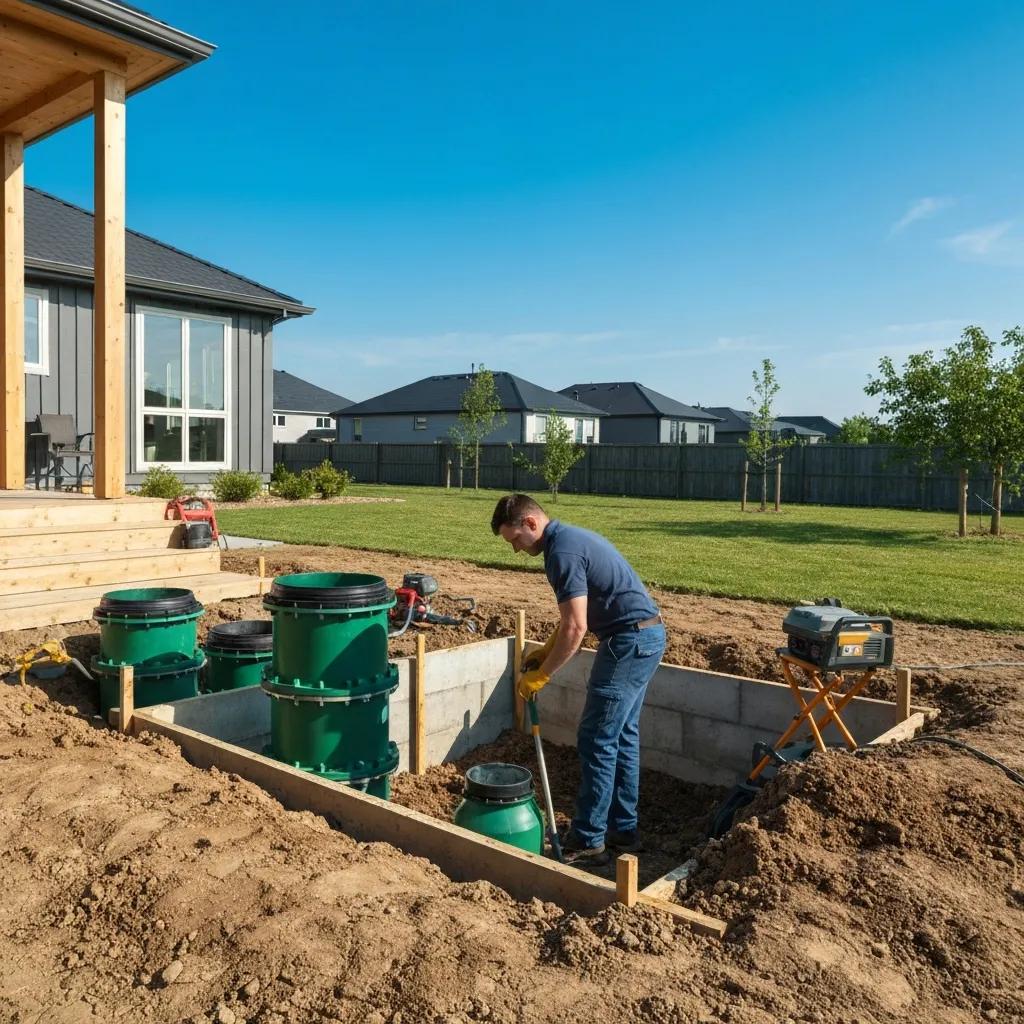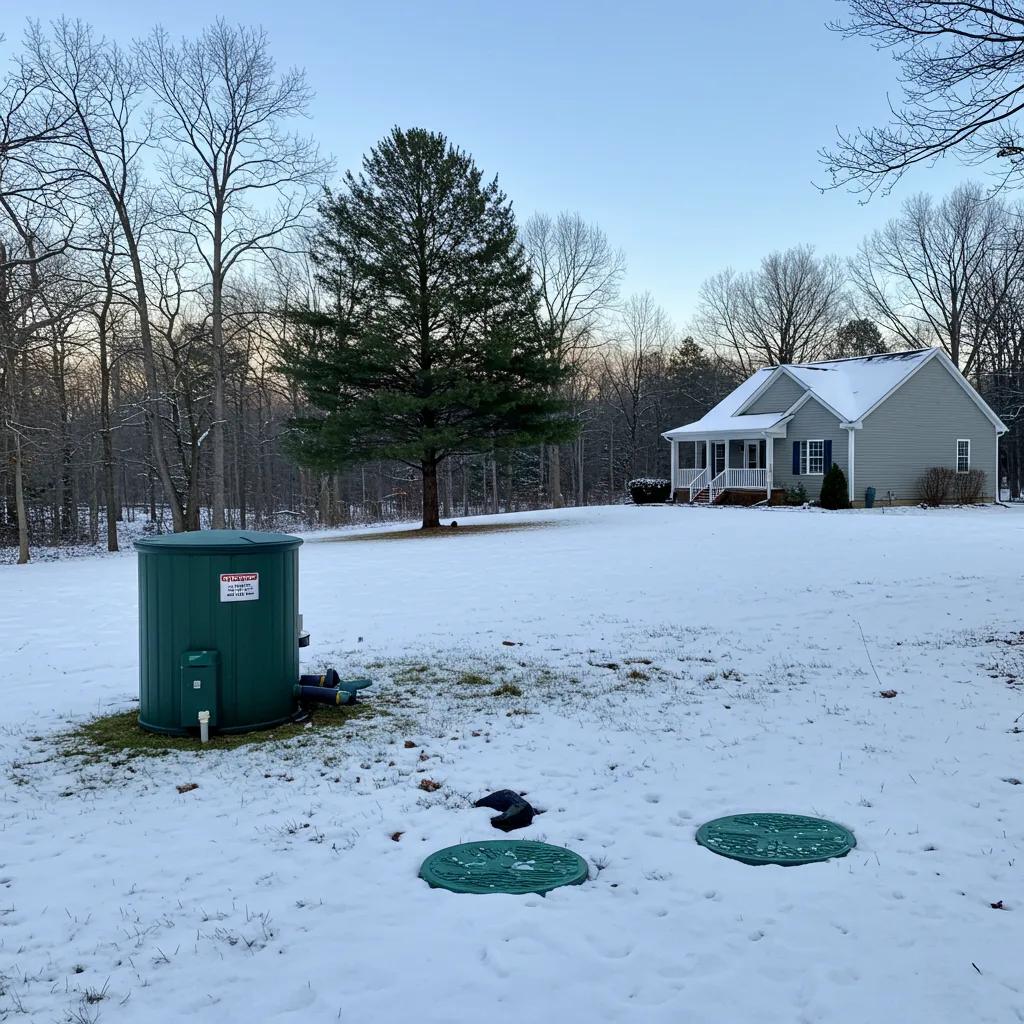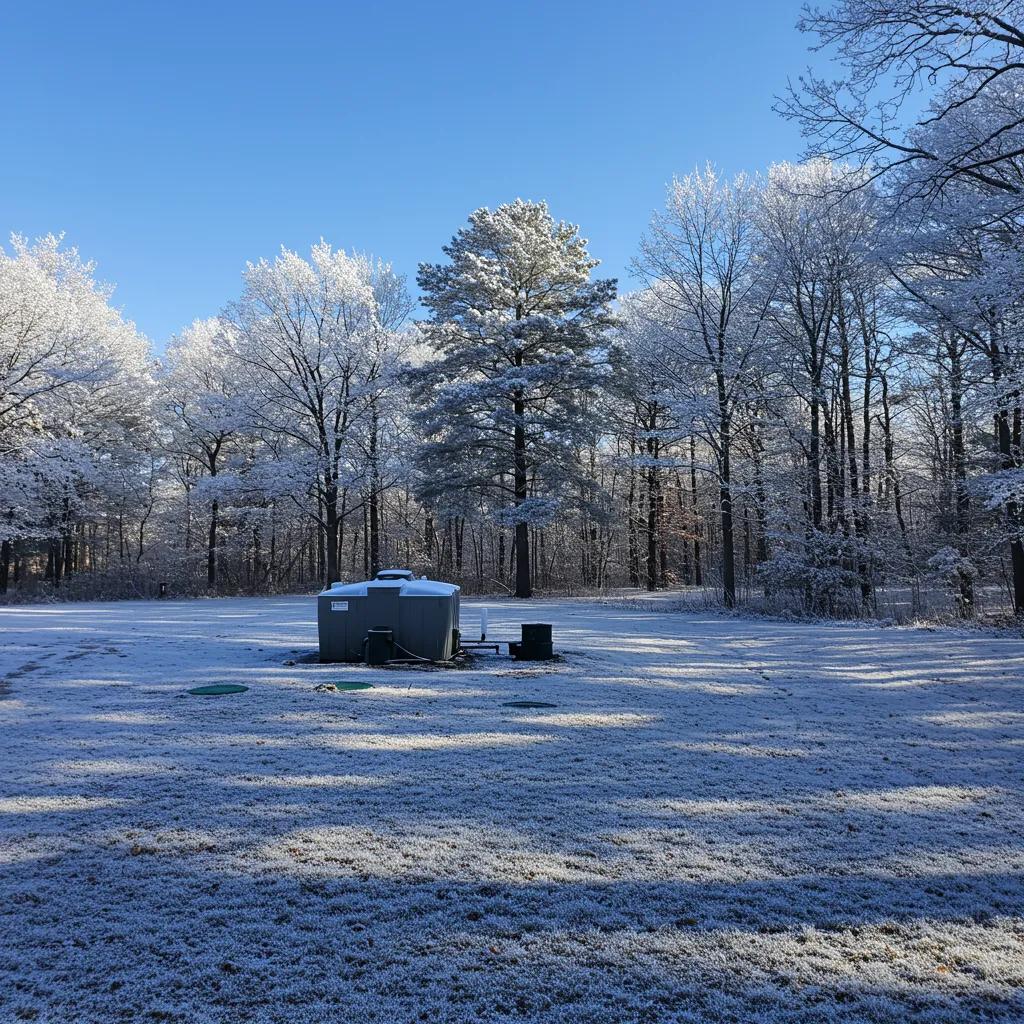Proper site assessment plays a vital role in ensuring successful septic tank installation, and Smart Septic Pros understands that better than anyone. Whether it’s about septic tank repairs or installing new septic drain fields, a comprehensive evaluation of the location is essential for optimal system performance.
Understanding the importance of assessing the site can help prevent future issues, saving time and money. Keep reading to find out how a thorough site assessment lays the groundwork for your successful septic installation.
Why Site Assessment Is Key for a Successful Septic Installation
Understanding the Role of Site Assessment in Septic Installation

A thorough site assessment plays a key role in ensuring a septic tank operates effectively and complies with the law. All these elements contribute significantly to the success of a septic system.
Evaluating Soil Conditions for Septic Functionality
When setting up a septic tank, evaluating soil conditions is key to ensuring functionality. The soil needs to be solid enough to support the system while also providing good drainage for wastewater. Poor soil conditions can lead to serious issues, affecting not only the septic system’s efficiency but also overall environmental health.
Different soil types have unique properties that can impact how liquid waste is absorbed and treated. Sandy soils usually allow for better drainage, while clay soils may lead to slow absorption rates, causing backups. Understanding these characteristics can help in deciding the best location for the septic tank and impact future irrigation plans:
| Soil Type | Drainage Capacity | Impact on Septic Tank |
|---|---|---|
| Sandy Soil | High | Good absorption and treatment |
| Loamy Soil | Moderate | Well balanced for systems |
| Clay Soil | Low | Slow absorption, higher risk of backups |
Assessing Land Topography for Installation Feasibility
Assessing land topography is essential for determining whether a location is suitable for septic tank installation. In areas with heavy rainfall, understanding the terrain helps prevent waste overflow during floods, which can lead to serious issues like water pollution.
Proper evaluation ensures that systems function effectively and supports recycling efforts by managing waste responsibly.
Identifying Potential Environmental Constraints
Identifying potential environmental constraints is vital during the site assessment for septic tank installation. Factors like proximity to groundwater or existing sanitary sewer systems can directly impact how well the effluent from the septic tank is managed.
Ensuring compliance with local regulations often requires certification that considers these constraints to prevent contamination and protect both the environment and public health.
A thorough site assessment sets the stage for a smooth septic installation, ensuring everything runs without a hitch. Let’s dive into the key steps that make up an effective site assessment process.
Steps Involved in Comprehensive Site Assessment

Proper site assessment is a key first step in setting up a septic system that works efficiently and keeps both bacteria levels and public health in check.
Conducting an Initial Site Review
Conducting an initial site review is an essential first step in evaluating a property for septic tank installation.
This inspection collects data on the site’s overall condition, identifying any hazards that could impede sanitation or proper wastewater treatment. By adhering to regulation guidelines, professionals can pinpoint potential risks ahead of time and plan for efficient installation.
| Evaluation Aspect | Importance |
|---|---|
| Site Condition | Identifies hazards and risks |
| Regulatory Compliance | Ensures adherence to local laws |
| Wastewater Flow | Assesses drainage and absorption potential |
This comprehensive evaluation supports a smooth process, laying a solid foundation for future assessments and decisions regarding septic system placement.
Performing Detailed Soil Evaluation
Performing a detailed soil evaluation is a must when it comes to septic tank installation. In New Hampshire, examining the soil‘s different horizons helps determine how well the ground can handle wastewater.
It’s not just about efficiency; understanding the soil structure can prevent pollutants from entering the drinking water supply, safeguarding health and the environment.
| Soil Horizon | Characteristics | Impact on Septic System |
|---|---|---|
| Top Soil | Rich in organic matter | Good for drainage, less likely to hinder absorption |
| Subsoil | Denser with minerals | May slow down absorption, requires further assessment |
| Bedrock | Solid rock layer | Can limit installation depth and drainage options |
Doing a Topographic Survey to Understand Land Contour
When assessing the site for a septic tank, doing a topographic survey is key to grasping the land contour. This step helps identify areas that may affect drainage, absorption, and even the positioning of the pump system.
Understanding the topography not only aids in determining installation costs but also plays a vital role in ensuring food safety by preventing waste overflow and contamination hazards.
Executing a Percolation Test for Soil Absorption Rates
Executing a percolation test is an essential step in assessing how well soil can absorb water. This test helps identify the rate at which water drains through the soil, which is crucial for the healthy functioning of a septic system and the surrounding environment.
Failure to perform this test can lead to contamination of the water supply and problems with water quality, especially in areas near a water table or within a condominium setup where multiple systems are in close proximity.
- Survey the site to choose test locations.
- Dig test holes in designated spots.
- Fill holes with water and monitor the drainage rate.
- Record results for analysis and planning.
Once the site assessment is complete, it’s time to uncover what truly makes a location ideal for septic systems. Understanding the key factors influencing this suitability can lead to a more efficient and effective septic solution.
Factors Influencing Site Suitability for Septic Systems

Site suitability for septic systems hinges on several critical factors that ensure efficient operation and environmental safety. Each of these elements contributes to a well-functioning septic system and the overall health of the property.
Importance of Groundwater Level in Site Selection
Groundwater level directly impacts the efficiency of a septic system. If the groundwater is high, it can interfere with the absorption of wastewater, leading to system failure or backups.
Properly assessing groundwater levels ensures that the septic system is placed in a location where it can function effectively without risking contamination or environmental damage.
How Soil Type Determines System Type and Size
The type of soil found at a property significantly affects both the system type and size needed for effective septic tank operation. For example, sandy soil, with its quick drainage properties, can accommodate smaller systems as it handles liquid waste efficiently.
Conversely, clay soil might require larger systems designed for slower absorption, ensuring that the septic tank can adequately manage wastewater without causing backups or environmental issues.
The Influence of Site Slope on Septic Layout
The slope of a site plays a significant role in how effectively a septic system functions. Steep slopes can hinder the natural flow of wastewater, making it challenging for the system to drain properly. In contrast, gentle slopes may aid in better drainage and overall system performance, impacting the decisions on system type and design.
When assessing site slope, it’s essential to consider both drainage efficiency and potential erosion risks. Proper planning helps create a layout that ensures waste moves smoothly while minimizing the risk of system failure. Attention to these details can lead to a healthier environment and increased longevity of the septic system:
- Identify the steepness of the terrain.
- Evaluate drainage pathways for waste flow.
- Consider erosion control measures if necessary.
Assessing Proximity to Water Bodies to Avoid Contamination
When installing a septic tank, evaluating the distance to nearby water bodies is vital to prevent contamination of these sources.
Close proximity to lakes, rivers, or streams increases the risk of wastewater affecting water quality, which can lead to serious environmental issues. Keeping an appropriate buffer zone not only helps protect aquatic ecosystems but also ensures compliance with local regulations.
| Distance to Water Body | Impact on Septic System | Recommended Buffer Zone |
|---|---|---|
| 0-50 feet | High risk of contamination | Minimum 100 feet |
| 50-100 feet | Moderate risk of contamination | Minimum 75 feet |
| Over 100 feet | Low risk of contamination | Minimum 50 feet |
Choosing the right location for a septic system is just the first step. Ignoring a proper site assessment can lead to some serious risks that no homeowner should overlook.
Potential Risks of Skipping Site Assessment for Septic Tanks

Skipping a thorough site assessment for septic tank installation can lead to a series of problems that are hard to fix later on. On top of that, non-compliant installations can bring legal troubles and hefty fines, causing financial strain. It’s clear that neglecting site assessment is a risk no property owner should take.
The Risk of Septic System Failure Without Proper Assessment
A proper site assessment is crucial, as skipping this step can lead to septic system failures that come with severe consequences.
Homeowners might face costly repairs or, worse, the complete collapse of their sewage management system, which could turn their property into a health hazard. Strong planning and careful evaluation act as safeguards against these risks, ensuring the septic system is placed optimally to operate efficiently.
Ignoring site assessments may lead to:
- Severe system backups and failures
- Environmental contamination issues
- High repair and maintenance costs
- Legal troubles from non-compliance
Environmental Consequences of Inadequate Septic Placement
Inadequate septic placement can have serious environmental repercussions. Contaminated groundwater and surface water can result from improperly installed septic systems, putting local ecosystems at risk.
When waste leaks into the environment, it doesn’t just threaten aquatic life; it can also pose health hazards to nearby communities.
Legal and Financial Implications of Non-Compliant Installations
Non-compliant installations can lead to severe legal consequences for property owners.
Fines and penalties may arise from failing to follow regulations set by local health departments or environmental agencies. Not only can this add financial strain, but it can also complicate future property transactions, making it harder to sell or develop the property.
Skipping a site assessment can lead to significant issues down the line, but knowing what to look for can prevent headaches later. Understanding the key factors in site assessment is crucial for ensuring a successful septic installation that meets all your needs.
Key Considerations in Site Assessment for Successful Septic Installation

Proper environmental site assessment goes beyond the immediate placement of a septic tank; it also involves understanding the local regulations and permits required to ensure compliance. By addressing these key factors, property owners can set up a reliable septic system that meets current needs while being adaptable for the future.
Understanding Local Regulations and Permits Requirement
Understanding local regulations and obtaining the necessary permits is a fundamental step for anyone looking to install a septic system. Different areas have specific guidelines that must be followed to ensure that the installation complies with health and environmental standards.
By researching these requirements beforehand, property owners can avoid delays and potential fines, making the process smoother and more efficient:
| Regulation Type | Description | Importance |
|---|---|---|
| Health Department Guidelines | Standards for septic system design and installation | Helps protect public health |
| Environmental Regulations | Rules regarding soil and water protection | Prevents contamination of resources |
| Permitting Process | Required approvals for installation | Ensures compliance with local laws |
Getting familiar with these factors can save time and ensure that the septic system is set up correctly from the beginning. Engaging local authorities or professionals can be beneficial in navigating through any complicated procedures or paperwork, helping to ensure everything goes off without a hitch.
The Role of Professional Site Evaluators in Septic Planning
Professional site evaluators bring valuable expertise to the septic planning process, ensuring installations meet both safety and regulatory standards.
They assess land conditions, analyze soil types, and identify potential environmental risks, which helps property owners avoid future complications. By leveraging their knowledge, these experts streamline the installation process and enhance overall system performance.
Long-Term Planning: Considering Future Land Use and Development
Long-term planning plays a vital role in septic tank installation as it helps anticipate changes in land use or development that could impact the system’s efficiency.
Property owners should think ahead about potential expansions, such as building additional structures or altering the landscape, which may affect how wastewater is managed. By considering future land developments during the site assessment report, individuals can ensure their septic system remains effective and compliant for years to come.
Conclusion
Proper site assessment is the foundation of a successful septic installation, ensuring your system is safe, efficient, and meets regulatory requirements. It ensures that factors like soil conditions, land topography, and environmental constraints are adequately evaluated, preventing future system failures.
With Smart Septic Pros, you can trust that every detail, from soil type to water table depth, is meticulously evaluated to guarantee optimal system performance and longevity. Ready to get started? Contact Smart Septic Pros today at 678-993-4545, or request a septic service by filling out our website contact form today!



